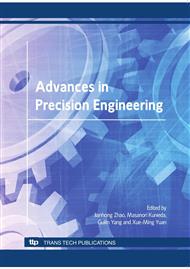p.681
p.685
p.690
p.695
p.700
p.705
p.710
p.715
p.720
Thin Film of Palladium on Alumina Ceramic Membrane Tube: Effect of Combine Sol-Gel Process with Electroless Plating on Deposits Morphology
Abstract:
In this work, the potential of utilizing the porous alumina ceramic membrane coated with palladium as a hydrogen permselective membrane has been studied. The ceramic membrane is characterized by high permeability but at low hydrogen selectivity. In order to increase the pure hydrogen selectivity and to obtain high hydrogen yield on the ceramic membrane, palladium was coated on the alumina membrane surface. Such an arrangement would also enable the ceramic membrane to be operated at higher temperature. The preparation of the palladium coated ceramic membrane was carried out using combine sol-gel process and the electroless plating technique. The effect of combine sol-gel process with electroless plating towards deposits morphology, hydrogen permeability, and hydrogen permselectivity were analysed. The thickness and morphology of the α- Alumina and Pd composite membranes were analysed using a scanning electron microscopy (SEM) and atomic force microscopy (AFM).
Info:
Periodical:
Pages:
700-704
Citation:
Online since:
September 2010
Authors:
Price:
Сopyright:
© 2010 Trans Tech Publications Ltd. All Rights Reserved
Share:
Citation:


